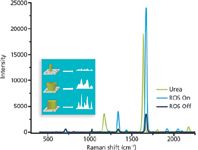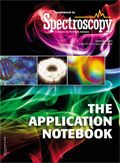Identification of Explosives with Handheld Raman Spectroscopy and an Innovative Sampling Technique
A novel optical focusing method overcomes sampling hurdles associated with Raman devices that are based on a dispersive design. Raster Orbital Scanning (ROS) samples the target materials while maintaining high resolution and minimizing the power buildup of a tightly focused laser typical in Raman applications.
A novel optical focusing method overcomes sampling hurdles associated with Raman devices that are based on a dispersive design. Raster Orbital Scanning (ROS) samples the target materials while maintaining high resolution and minimizing the power buildup of a tightly focused laser typical in Raman applications.
Innovative Raman Sampling Solution
All conventional portable and handheld Raman systems are based on a dispersive design. The drawback of this design is the tradeoff between laser spot size and resolution. Most conventional instruments have a very small laser spot size. This tightly focused beam produces high resolution but may miss the target material completely. Increasing the sampling area using a large beam requires a larger aperture and consequently, a corresponding loss of resolution, making accurate library matching difficult and prone to error. The IDRaman mini from Ocean Optics combines a tightly focused laser beam with ROS to overcome these issues.
The advantage of using the ROS sampling technique is shown in the inset of Figure 1. In contrast to conventional handheld instruments, the IDRaman mini with ROS sampling overcomes the tradeoff between aperture size and resolution by quickly rastering a tightly focused beam over a large area. This enables the sampling of all target materials for accurate library matching and compound identification.

Figure 1: IDRaman mini spectra for ammonium nitrate and urea (commonly mistaken for AN). The ROS technique (inset) overcomes the tradeoff between sampling area and resolution.
IDRaman mini for Non-Homogeneous Samples
A good example of how ROS benefits Raman analysis is the measurement of ammonium nitrate porous prill (AN). Ammonium nitrate prill is used in the manufacture of ammonium nitrate/fuel oil (ANFO), a common explosive used in mining and quarries. It is also a common explosive used in improvised explosive devices (IEDs).
In an effort to reduce the number of IEDs, officials have established many different laws limiting the availability of starting materials like AN. Unfortunately, to avoid AN restrictions, unscrupulous manufacturers sometimes label AN as urea in a guise to distribute it to clandestine labs, as it is impossible to distinguish visually.
The large porous beads of AN prill are difficult to analyze by Raman spectroscopy. As shown in Figure 1, conventional handheld Raman spectrometers without the ROS feature perform poorly. Most portable Raman systems available today would provide a spectrum similar to the "Raster Orbital Scan Off" spectrum. With these conventional systems, accurate identification is only accomplished if (1) the focus is perfectly aligned on a single AN bead and (2) the beam is not focused on a pore of a bead or between individual beads. As such, precise focus or multiple measurements could be unsafe in situations where external threats are imminent.
Conclusions
The increased signal obtained with ROS is due to the large sample interrogation area. ROS allows for the accurate identification of AN without the need to focus on a single prill bead or make multiple measurements to assure the proper beam position and focus. This data clearly shows how ROS interrogates more of the sample during each scan, providing higher quality data for library matching.
The innovative ROS sampling approach in the IDRaman mini overcomes sampling limitations, giving the user a large sample interrogation area and lower laser powers for accurate identification using a handheld Raman system. As shown in the analysis of ammonium nitrate prills, the IDRaman mini with ROS technology delivers threat identification with the utmost confidence.
Ocean Optics
830 Douglas Avenue, Dunedin, FL 34698
tel. (727) 733-2447, fax (727) 733-3962
Website: www.OceanOptics.com
